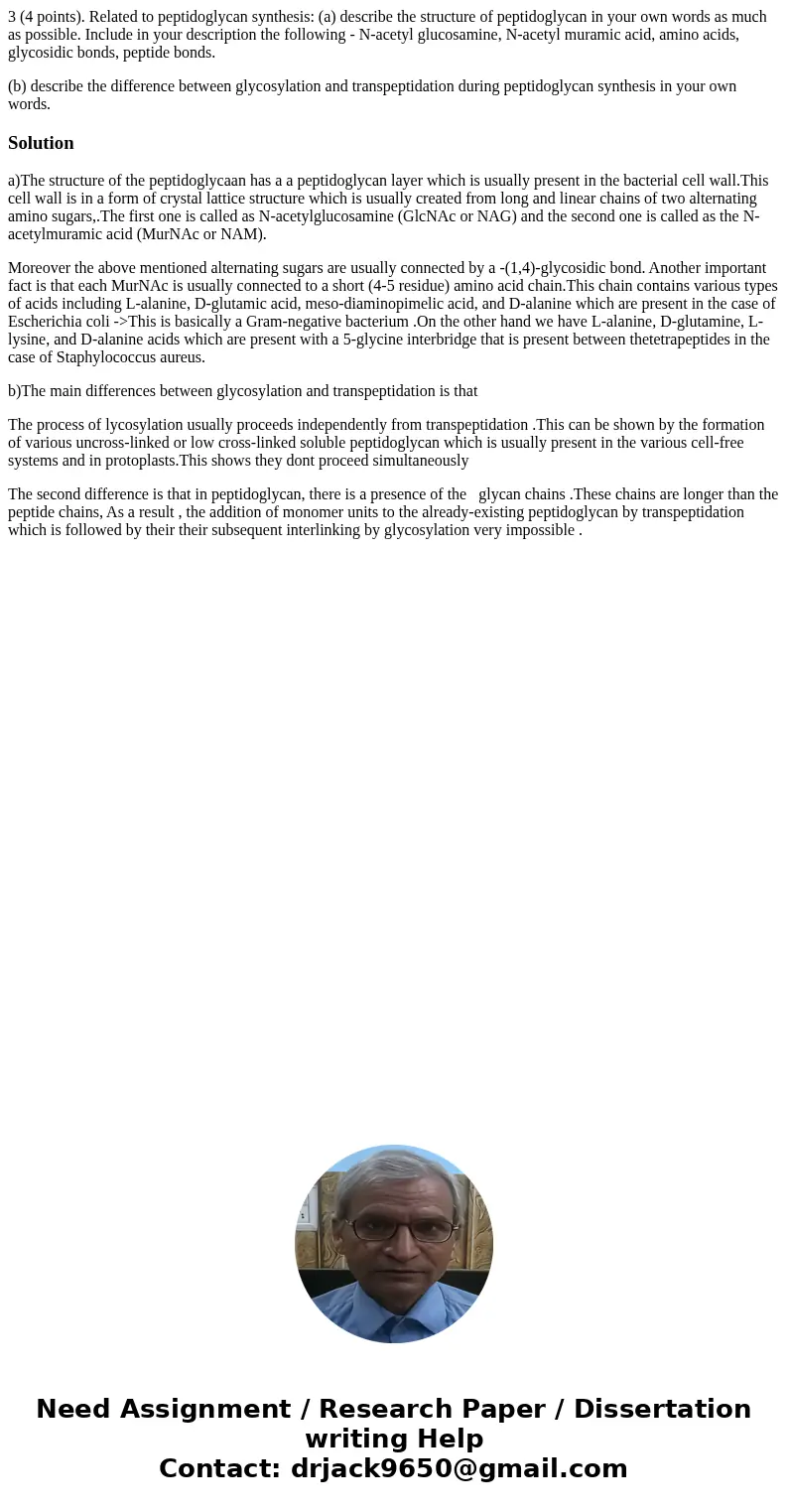3 4 points Related to peptidoglycan synthesis a describe the
3 (4 points). Related to peptidoglycan synthesis: (a) describe the structure of peptidoglycan in your own words as much as possible. Include in your description the following - N-acetyl glucosamine, N-acetyl muramic acid, amino acids, glycosidic bonds, peptide bonds.
(b) describe the difference between glycosylation and transpeptidation during peptidoglycan synthesis in your own words.
Solution
a)The structure of the peptidoglycaan has a a peptidoglycan layer which is usually present in the bacterial cell wall.This cell wall is in a form of crystal lattice structure which is usually created from long and linear chains of two alternating amino sugars,.The first one is called as N-acetylglucosamine (GlcNAc or NAG) and the second one is called as the N-acetylmuramic acid (MurNAc or NAM).
Moreover the above mentioned alternating sugars are usually connected by a -(1,4)-glycosidic bond. Another important fact is that each MurNAc is usually connected to a short (4-5 residue) amino acid chain.This chain contains various types of acids including L-alanine, D-glutamic acid, meso-diaminopimelic acid, and D-alanine which are present in the case of Escherichia coli ->This is basically a Gram-negative bacterium .On the other hand we have L-alanine, D-glutamine, L-lysine, and D-alanine acids which are present with a 5-glycine interbridge that is present between thetetrapeptides in the case of Staphylococcus aureus.
b)The main differences between glycosylation and transpeptidation is that
The process of lycosylation usually proceeds independently from transpeptidation .This can be shown by the formation of various uncross-linked or low cross-linked soluble peptidoglycan which is usually present in the various cell-free systems and in protoplasts.This shows they dont proceed simultaneously
The second difference is that in peptidoglycan, there is a presence of the glycan chains .These chains are longer than the peptide chains, As a result , the addition of monomer units to the already-existing peptidoglycan by transpeptidation which is followed by their their subsequent interlinking by glycosylation very impossible .

 Homework Sourse
Homework Sourse